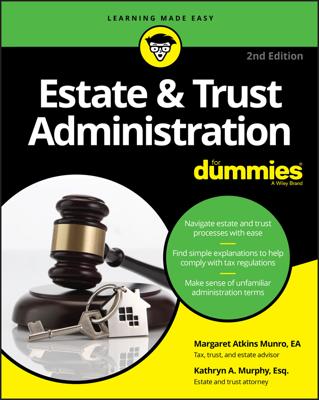An estate’s administrator must complete Schedule B: Stocks and Bonds when filing Form 706, United States Estate (and Generation-Skipping Transfer) Tax Return if the estate includes stocks, bonds, or other securities. These securities should be reported at fair market value. Seek professional help when valuing unmarketable securities and remember to include accrued interest and dividends on this schedule.
The description of each stock reported on Schedule B should include:
Number of shares
Type (common or preferred)
Par value: Typically only necessary for preferred stock
Price per share
Corporation name
Principal exchange on which the stock is sold, if any
Nine-digit CUSIP number: Found on the face of the certificate; or you can consult the stock’s transfer agent or the investment advisor
Like stocks, each bond reported on Schedule B needs a description which should include the principal exchange and the CUSIP number. They should also include:
Quantity and denomination
Name of the obligor
Date of maturity
Interest rate and due date
Valuing securities: Fair market value and other valuations
Report stocks and bonds on Form 706 at their fair market value (FMV) as of date of death. The FMV of a security is the mean or average between the high and low selling prices on the decedent’s date of death. However, there are different ways to calculate FMV depending on the information available:
If only closing prices are available: Use the average between the closing price on the date of death and the closing price on the day before the date of death.
If the decedent died on a weekend: Use the average value on the Friday before and the average value on the Monday after, and prorate the difference between the mean prices to the actual date of death, the Saturday or the Sunday.
If Y Company’s stock was selling for a mean of $10 per share on Friday and $13 per share on Monday and the decedent died on Saturday, the FMV of a share of that stock on Saturday is computed as follows: (2 days at $10) + (1 day at $13) divided by 3 total days = $11.
If there were no sales on the decedent’s date of death: Find the trading dates closest to the decedent’s date of death and use the above formula.
If you can’t find sales reasonably close to the valuation date: Use the mean between the bona fide bid (what a buyer is willing to pay) and ask prices (the seller’s price).
Publicly traded securities
When valuing publicly traded stocks and bonds, you may want to consult the Wall Street Journal or an internet pricing service to find the mean values on the decedent’s date of death. If the securities were in a brokerage account at the time, consult the broker. Refer to the broker’s letter on Schedule B and attach it to your 706 as an exhibit.
Unmarketable securities
Valuing unmarketable securities, securities not traded on any public exchange, is governed by regulations contained in section 2031 of the IRS Code. Consult a qualified professional.
Securities of no value
If the decedent owned securities that have lost most or all of their value, report these last on Schedule B. Include the state, date of incorporation, and address of the company, if any. Attach as exhibits copies of documents used to determine that the security has no value.
Accrued dividends and interest
Include accrued dividends and interest on Schedule B. There are three important dates used to calculate the cash dividends due or accrued:
The declaration date when the dividend is declared.
The record date, used to determine which shareholders receive the dividend.
The payment date, when the dividend is paid to shareholders of record.
Include the dividend on the return if the decedent died after the record date and before the payment date. There are additional circumstances surrounding interest and dividends that you need to be aware of:
Stock selling ex dividend: Stock sells ex dividend (with a dividend that has already been declared, so the stock price is reduced by the amount of the dividend) just before the record date. If you have these stocks in your estate, add the value of the dividend to the value of the stock. Don’t report it separately.
Accrued stock dividends: Sometimes a stock dividend (made up of shares of stock) is declared rather than a cash dividend. Report any stock dividends accrued, or accumulated, during the decedent’s lifetime the same way you would report cash dividends.
Accrued interest: In calculating accrued interest on a bond through the date of death, divide the number of days since interest was last paid (from the date of death) by 365. Multiply that result by the annual interest paid on the bond.

